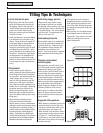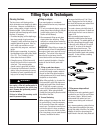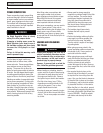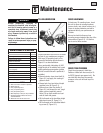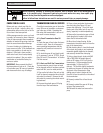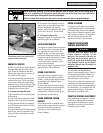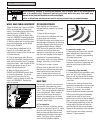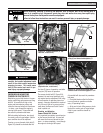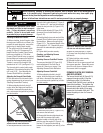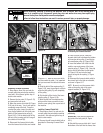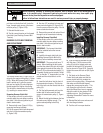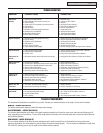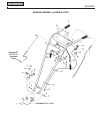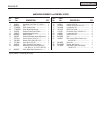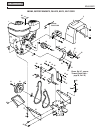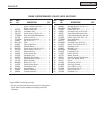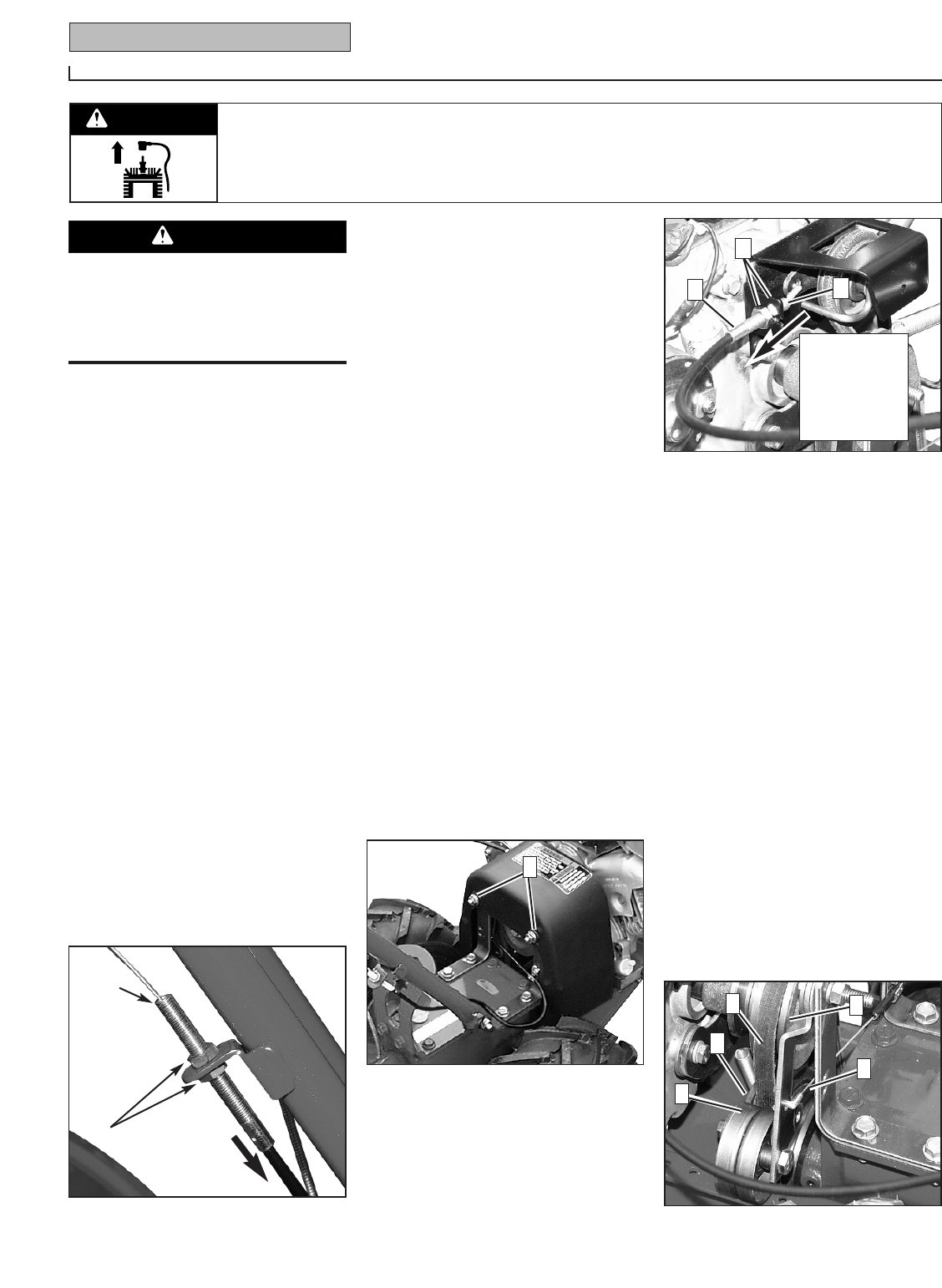
22 Section 5: Maintenance
Before inspecting, cleaning or servicing the machine, shut off engine, wait for all moving parts to
come to a complete stop, disconnect spark plug wire and move wire away from spark plug.
Remove the key from the keyswitch on units so equipped.
Failure to follow these instructions can result in serious personal injury or property damage.
WARNING
Checking Forward Belt Tension
1. Before checking, shut off engine, allow
the engine and muffler to cool down, dis-
connect the spark plug wire, remove the
ignition key on electric start models.
2. The coiled part of the forward clutch
spring (E, Figure 5-10) measures 2" in
length when the Forward Clutch Control
levers are not pulled up. Pull either
Forward Clutch Control Lever up against
the handlebar and measure the length of
the coil on the forward clutch spring.
Tension is correct if the length of the
extended coil is 2-1/2" (see Figure 5-11).
The forward clutch control cable needs
adjustment if the extended length of the
coil is not 2-1/2". See Adjusting the
Forward Clutch Belt for a procedure.
Adjusting the Forward Clutch Cable
Do this procedure if the forward clutch
spring measurement is not correct (see
Checking Forward Belt Tension).
1. Before adjusting the belt, shut off
engine, allow the engine and muffler to
cool down, disconnect the spark plug
wire, and remove the ignition key on elec-
tric start models.
2. Belt adjustments are done with the
forward clutch cable adjuster (F, Figure 5-
10). Use two 1/2", open-end wrenches to
loosen the two jam nuts (A, Figure 5-12)
a few turns.
3. Move cable adjuster (B, Figure 5-12)
downward for more belt tension (see
Figure 5-12).
4. Hand tighten the jam nuts and pull the
Forward Clutch Control levers up against
the handlebar. Measure the spring coil
(Figure 5-11). The extended length of the
coil should be 2-1/2". Repeat this proce-
dure until the extended spring length is
correct.
5. Tighten both jam nuts securely.
Checking and Adjusting Reverse
Clutch Belt Tension
Checking Reverse Clutch Belt Tension
The reverse clutch belt (D, Figure 5-9)
needs adjustment if the belt slips in
reverse or if there is no reverse. See
Adjusting Reverse Clutch Belt below.
Adjusting Reverse Clutch Belt
1. Before adjusting the belt, shut off
engine, allow the engine and muffler to
cool down, disconnect the spark plug
wire, and remove the ignition key on elec-
tric start models.
2. Remove the two nuts (C, Figure 5-13)
and remove the belt cover.
3. Reverse belt tension adjustments are
done with the reverse clutch cable
adjuster located on the left side of the
machine near the engine (D, Figure 5-14).
Use two 1/2" open-end wrenches to
loosen the two adjuster jam nuts (E) a few
turns.
4. Move the cable adjuster (D, Figure
5-14) away from the pulleys to increase
belt tension.
5. Tighten both jam nuts securely.
6. Reinstall the belt cover.
7. Move the unit to an open area and test
the reverse operation. Repeat this proce-
dure if the unit does not respond when
the reverse clutch is engaged.
FORWARD CLUTCH BELT REMOVAL
AND REPLACEMENT
The forward clutch belt (K, Figure 5-15)
engages the engine pulley (I) and the
transmission pulley (J) when either
Forward Clutch Control Lever is pulled up
against the handlebar. This tightens the
forward clutch cable (G) which causes the
forward clutch idler pulley (H) to apply
pressure to the forward clutch belt. This
causes the pulleys to turn for Forward
movement.
Figure 5-13: Belt cover.
Figure 5-12: Move forward clutch cable
adjuster down for more belt tension.
A
More Belt
Tension.
B
C
Figure 5-15: Forward clutch control
assembly.
G
I
J
H
K
Figure 5-14: Reverse clutch cable adjuster.
Left-side view with belt cover removed.
D
F
Move cable
adjuster away
from pulleys to
increase reverse
belt tension.
E
Incorrect cable adjustment could cause
the wheels and tines to rotate unexpect-
edly. Follow adjustment procedures
carefully. Failure to do so could result
in personal injury or property damage.
CAUTION



